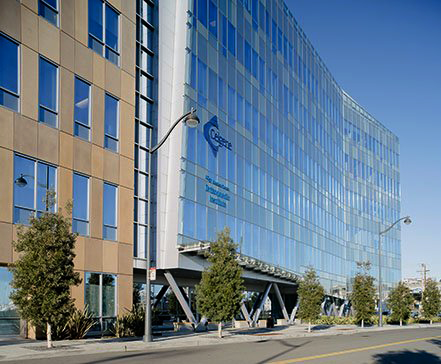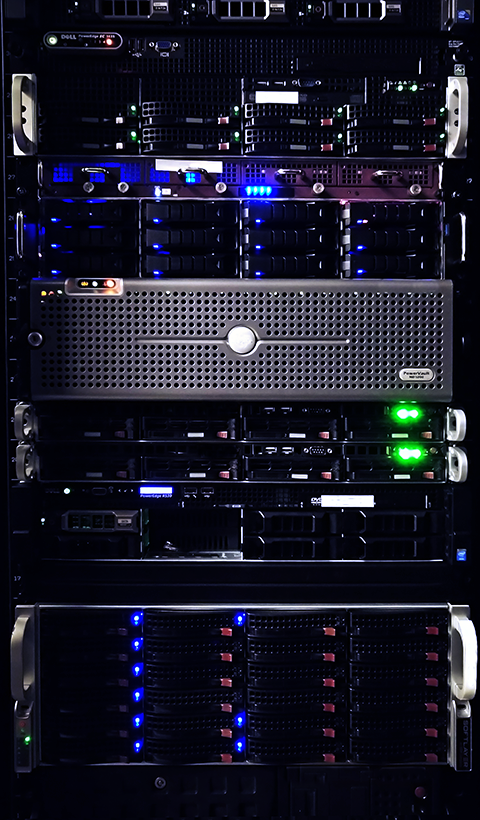Multiple sclerosis (MS) is a chronic, life-changing disease of the central nervous system that is most often diagnosed in the third or fourth decade of life, occurs more frequently in women than in men, and globally affects more than two million individuals (at least 400,000 of them in the US). There is broad consensus that MS etiology is multifactorial and that the MS-prone genotype results from multiple independent DNA variants relatively frequent in the population. The polygenic model of MS heritability provided the rationale and drive for assembling large DNA datasets to pursue genome-wide association studies (GWAS), which identified over 200 statistically independent autosomal polymorphisms associated with risk. In aggregate, these findings explain at least 50% of the overall contribution of genetics to disease susceptibility, of which over 10% are attributable to Major Histocompatibility Complex (MHC)-associated polymorphisms. Beyond this effort to describe risk heritability, there are significant questions that remain to be answered to maximize the value of genetic research in MS, including the need to describe and interpret the relationships between genotype and phenotype, and identify markers of disease progression.
The availability of highly sensitive and high-capacity methods for analysis of gene variation and expression combined with the implementation of algorithms that predict behaviors in complex biological circuits provides an outstanding opportunity to facilitate progress in the integration of multiple data sources and functional interpretation of physiological and laboratory results. Our goal is to apply novel molecular, informatic, statistical, and epidemiological approaches to illuminate fully the genetics of autoimmune demyelination. Specifically, our research plan includes:
The MS Genetics Laboratory is located on the second floor of the Sandler Neurosciences Center at the UCSF Mission Bay Campus. We occupy 12 desk areas and 12 adjacent benches in 2,550 square feet of wet lab space, which is part of a larger 8,500 square foot open laboratory complex dedicated to neuroimmunology research. Dry space with 6 cubicles for bioinformatics and statistical analysts, clinical research coordinators, and administrative personnel is directly attached to the laboratory. The laboratory is well equipped to perform all varieties of omics screens, molecular biology and immunological experiments.
The five-story, 237,000 square foot Sandler Center was inaugurated in July 2012 and is one of the largest integrated neuroscience basic and clinical research centers in the country. It houses the UCSF Department of Neurology, the Center for Integrative Neurosciences, and the Institute for Neurodegenerative Disease. Located on the first floor of the Center within the Department of Neurology, the Neurosciences Clinical Research Unit occupies over 14,200 sq.ft. with a waiting room and reception/administration area, 8 fully furnished exam rooms, 6 consultation rooms, and neurophysiology and imaging research capabilities, including a Siemens 3 Tesla TIM Trio scanner fully dedicated to multiple sclerosis to be used as described in Project 1. There are also 10 testing/control rooms (includes OCT retinal imaging, 64- and 128-channel EEG, TMS, tDCS, eye movement and reach movement recording, speech monitoring, and video observation), a nutrition station, a phlebotomy and sample processing room, medication, and medical record storage facilities. A virtual simulation room and microscopic core are under development. Finally, the building houses a 15,000 sq.ft. AAALAC accredited state of the art multispecies vivarium.
The Sandler Neurosciences Center hosts over 50 Principal Investigators affiliated with the Department of Neurology and close to 180 additional researchers and staff. Scientists from a wide range of disciplines employ the most advanced molecular genetics, genomics, epidemiology, computational, basic neuroscience, and CNS imaging research tools, while working in direct contact with top clinicians treating patients with neurological diseases. The Department of Neurology is currently the largest recipient of NIH awards among departments of neurology in US medical schools, and has many notable senior faculty including nine members of the Institute of Medicine, six members of the American Academy of Arts and Sciences, three members of the National Academy of Sciences, and a Nobel laureate. This is a highly charged creative environment for scientists who are making a global impact. Our Department has an outstanding record of fostering talented young clinician-scientists, as they become productive independent researchers. In addition, the neuroscience community at the UCSF MB campus includes research groups and core services at nearby Rock Hall, Genentech Hall and the Gladstone Institute of Neurological Disease. This community is highly interactive, with a monthly Brain Club seminar, weekly grand rounds, neuroimmunology seminars twice a month, journal clubs, visiting professorships, presentations from graduate and postdoctoral fellows, and Friday afternoon social gatherings.
For multiple sclerosis and related neuroimmunological diseases, we have established outstanding clinical and research units that provide a resource-rich environment for basic, clinical, epidemiological and translational research. We have an active postgraduate fellowship program and numerous nationally and internationally known faculty, many of whom have impressive records of mentorship and collaboration, including Jorge Oksenberg (genetics), Jill Hollenbach (immunogenetics), Sergio Baranzini (functional genomics and systems biology), Stephen Hauser and Scott Zamvil (neuro-immunology), Samuel Pleasure (neurobiology and neural differentiation), Jonah Chan and Stephen Fancy (oligodendrocyte biology), Roland Henry (neuro-radiology), Ari Green (neuro-ophthalmology), Jeffrey Gelfand (EMR-based research), Emmanuelle Waubant (pediatric MS), Michael Wilson (neuro-infectious diseases), Douglas Goodin, and Bruce Cree (clinical MS research), and Elizabeth Crabtree-Hartman (patient education).

Clinical activities take place at the UCSF Multiple Sclerosis Center, a comprehensive adult and pediatric specialty outpatient clinic currently housed within a newly renovated suite in a building adjacent to the MBC campus, (about 1000 ft. from the laboratories). The MS Center serves the population of Northern California and is also a primary reference resource for patients across the US and the world. The clinic is staffed by fifteen neurologists, all of whom are specialists in the care of patients with MS, and is supported by superb nursing and ancillary staff, including one full-time nurse clinician, two licensed vocational nurses, one social worker, one full-time neuropsychologist, and two full-time receptionists. A significant effort is dedicated to patient’s education and support groups. Approximately 1000 new patients are seen at the MS Center each year and approximately 4500 visits are completed each year for clinical follow-up and clinical research projects, including 8 clinical trials.

The computational suite of the MS Research Group is located adjacent to the wet labs. Under the direction of Adam Santaniello, resources available include seven dedicated, in-lab servers able to accommodate intensive computing tasks. All servers are housed in a secure, soundproof, temperature-controlled server room within the Sandler Neurosciences Center that features a dedicated auxiliary power source to keep systems online in the event of a building shutdown. All servers are 64-bit Linux (CentOS Stream 9 and Debian) with a range of CPU and memory configurations from one dual-core with 16GB up to 96 cores with 252GB; current in-laboratory storage capacity over 500TB. Four of these servers host the laboratory’s largest datasets and data management tools, including a custom-developed, centralized database repository of all MS study, sample, genotype, and phenotype data (MSBase), in addition to a complement of application programming modules. The mission-critical data on these servers is backed up nightly to both external RAID devices and a remote HIPAA-compliant cloud service for added reliability and research continuity in the event of an emergency. Three additional servers are dedicated to experimental analysis and file sharing among laboratory staff. They are locked behind campus- and host-level firewalls for maximum security. Finally, two high memory Dell servers (>64GB) with 34TB of direct-attached storage are available to lab members for ad-hoc analyses of next-generation whole genome sequences. All personal computers are encrypted. All computers and servers are backed up daily to offsite servers.
For the most advanced parallel processing bioinformatics projects, the UCSF laboratory has invested in a high priority share of the University of California-QB3 cluster, a high-performance computing facility managed by the California Institute for Quantitative Biosciences and located at the UCSF MB campus. This SGE-based (Sun Grid Engine) shared cluster has been in operation since 2005 and currently has over 600 nodes hosting a combined 4,678 cores of a variety of types (most are dual-processor 4- or 6-core Xeon64 machines, each with at least 2GB RAM per core and a 120GB hard disk), primarily backed by 36TB of fast network array storage housed in a total of 19 racks. The cluster has a 10Gbit/s direct connection to the university’s network backbone and supports approximately 30 research groups across campus, primarily in the areas of structural biology, systems biology and biomedical imaging. The MS genetics laboratory’s access to the cluster has allowed for expedited analyses such as parallel processing of whole genome sequence data, construction of vast gene expression networks, and large imputation projects.
The MS Genetics Group is also involved in the post-installation performance testing of a new, dedicated genomics cluster overseen by the Institute for Human Genetics (IHG) at UCSF. The IHG provides institutional support and resources that include a wide variety of state-of-the-art technology platforms and support services for cost effective, flexible solutions for genomics projects of any size, ranging from full-service, large-scale projects to equipment only support. The IHG cluster is co-located off-campus in the UCSF Mission Bay data center and is connected via a 10Gbit/s link to several Illumina HiSeq 2500 systems, housed in the Genomics Core Facilities, to facilitate high-throughput sequence analyses. The cluster was designed specifically for genomics research and complements the QB3 cluster’s emphasis on multi-core computing by providing many high-RAM nodes and a growing capacity for long-term storage of whole genome datasets. The current configuration comprises 864 CPUs across 52 infiniband-connected nodes with 52TB of fast storage and 360TB of archival storage. All nodes have at least 128GB of memory; two nodes have 1TB of memory each to support the most memory-intensive applications.
Finally, the recently launched UCSF Neuroscience Private Cloud Cluster is a virtualized computational cluster based, OpenStack platform and is located in the Sandler Neurosciences Center server room facility. This cluster allows for a scientifically agile method of allocating pooled computing resources in a many-investigator environment where computational activity and cluster usage vary greatly depending on need and availability. It is designed to scale-out easily with the addition of cluster nodes (current node specification is dual Xeon 8 core / 16 Thread processors, 384GB RAM, 9TB usable clustered storage). The Ceph object/block/file-level storage architecture provides automatic redundant copies of all data blocks protecting against data loss upon drive failures. The cluster operations were piloted between April and August 2013 and in September 2013, “went live” with 112 cores / 224 threads of execution, 2.7TB RAM, and 63TB usable cluster storage. There is no theoretical limit to the size of the cluster and the practical limit, given available space and power in the center’s server room, is a cluster of >1,000 cores.

The Multiple Sclerosis Genetics Research Laboratory at the Department of Neurology in the UCSF School of Medicine is combining genetics and functional genomics together with immunologic, biochemical, neuroimaging and clinical experimental approaches to identify and characterize pathogenic processes of relevance to multiple sclerosis and other inflammatory conditions of the central nervous system.